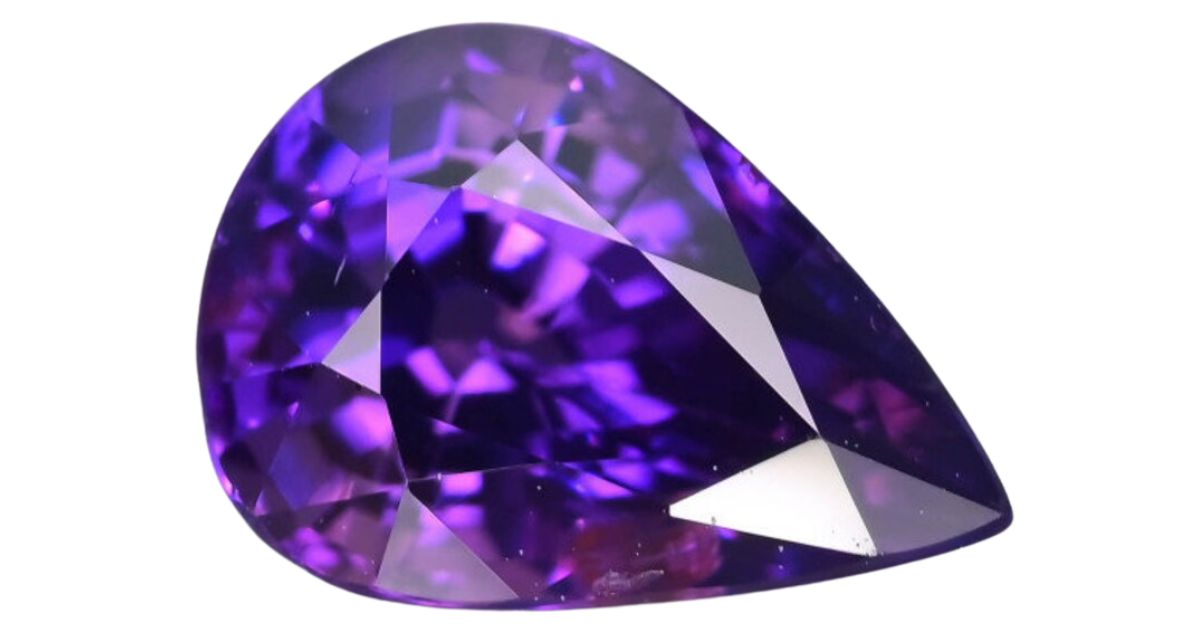I’m always thrilled to talk about the amazing world of gemstones. One interesting topic is how to differentiate purple sapphire vs amethyst, two gems that might look similar but are actually quite different.
Purple sapphire is actually a type of corundum, which is the same mineral family as rubies and blue sapphires. Amethyst, on the other hand, is a form of quartz, which is one of the most common minerals on Earth.
Even though they both share a beautiful purple color, their backgrounds tell us they have many differences. This comparison shows us how diverse and surprising the world of gemstones can be.
Purple Sapphire vs Amethyst – The Major Differences
It’s amazing how nature creates such diverse gems, each with their own distinct features. Let’s dive into what sets these two apart and sharing this exploration with fellow rock collectors and geology fans.
Luster – Amethyst has a glassy shine.
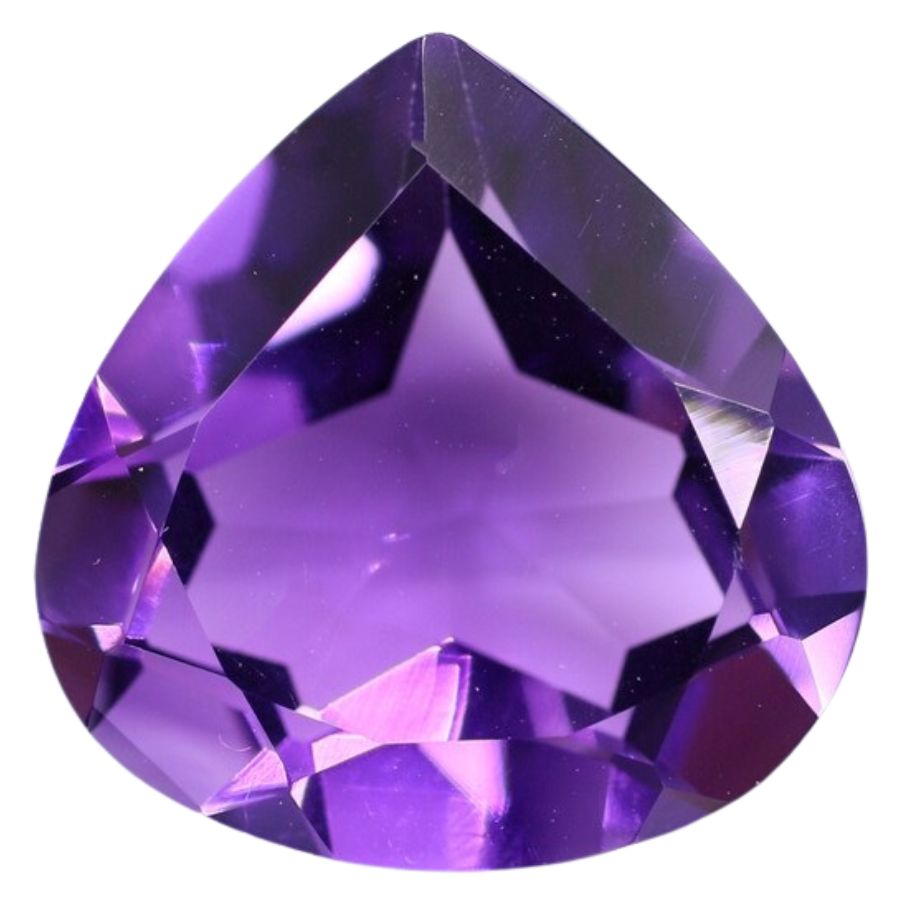
Luster in gemstones refers to the way light interacts with the surface of a crystal, mineral, or rock. Different types of luster can range from metallic and glassy to dull and earthy, significantly influencing the overall appearance of the gemstone.
The luster of purple sapphire can range from vitreous, resembling the shine of glass, to adamantine, like the brilliant sparkle of a diamond.
Amethyst, while also displaying a vitreous luster, tends to have a softer and less intense sparkle compared to purple sapphire.
Hardness – Purple sapphire is one of the hardest known gemstones.
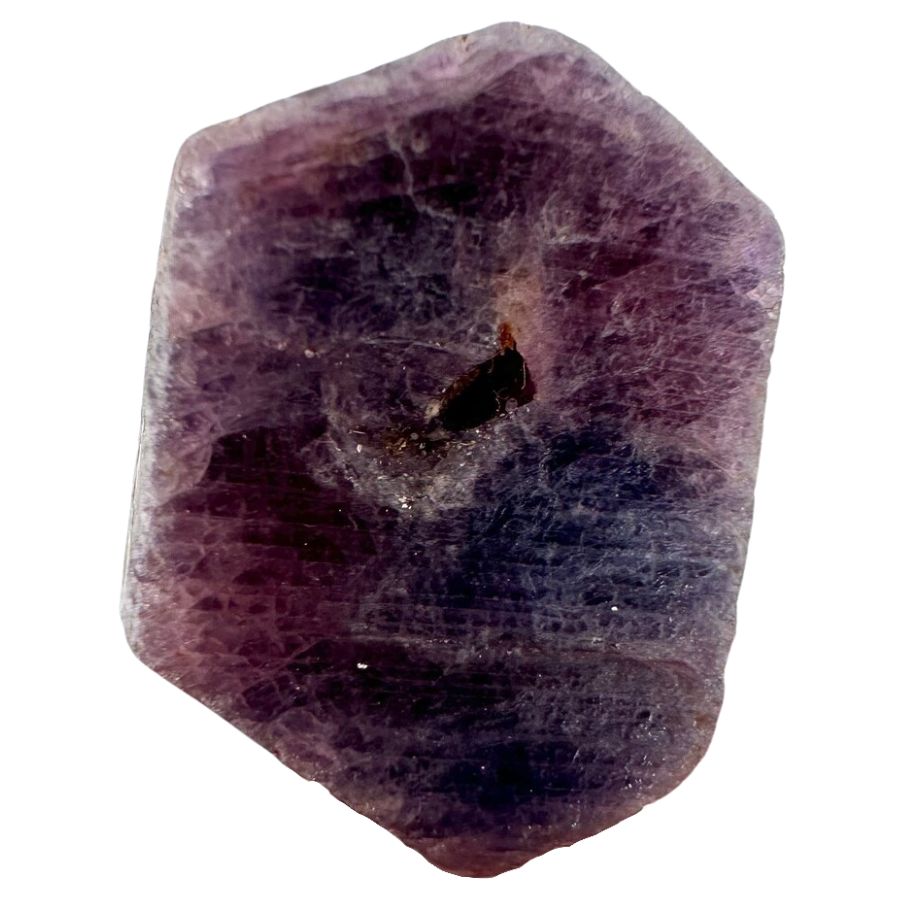
Hardness in gemstones is measured by how well they can resist scratches and abrasions. This characteristic is measured on the Mohs scale, a standard scale from 1 to 10.
The higher the number on the scale, the harder the material, and the more resistant it is to being scratched.
Purple sapphire ranks high on this scale, with a hardness rating of 9, making it one of the hardest minerals known. This exceptional hardness means that purple sapphires are highly resistant to scratches and everyday wear and tear.
In contrast, amethyst has a hardness of 7 on the Mohs scale. While it’s durable enough for use in various types of jewelry, it requires more care to avoid scratches and damage.
Crystal Structure – Amethyst forms in six-sided crystals.
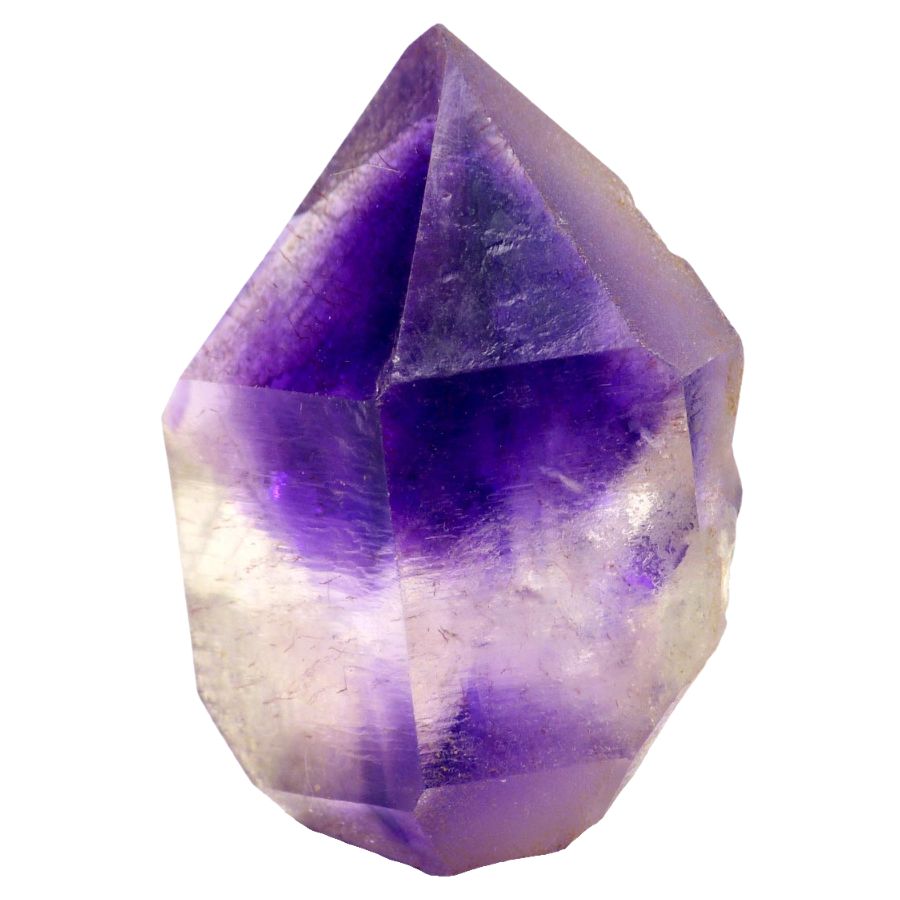
Crystal structure refers to the arrangement of atoms in a crystal and is a key factor in determining many of a gemstone’s physical properties.
Each type of gemstone has a unique crystal structure, which influences its shape, how it breaks, and how it reflects light.
When comparing amethyst vs purple sapphire, the difference in crystal structure is quite distinct. Purple sapphire crystallizes in the trigonal system, a geometric arrangement that often results in elongated, barrel-shaped crystals.
These crystals typically have flat, basal faces, which are a characteristic feature of the trigonal crystal system and contribute to the gemstone’s overall appearance and properties.
Amethyst, on the other hand, forms in the hexagonal crystal system. This structure leads to the development of elongated, prismatic crystals, with a six-sided pyramid at the end.
Chemical Composition – Purple sapphire is a form of corundum.
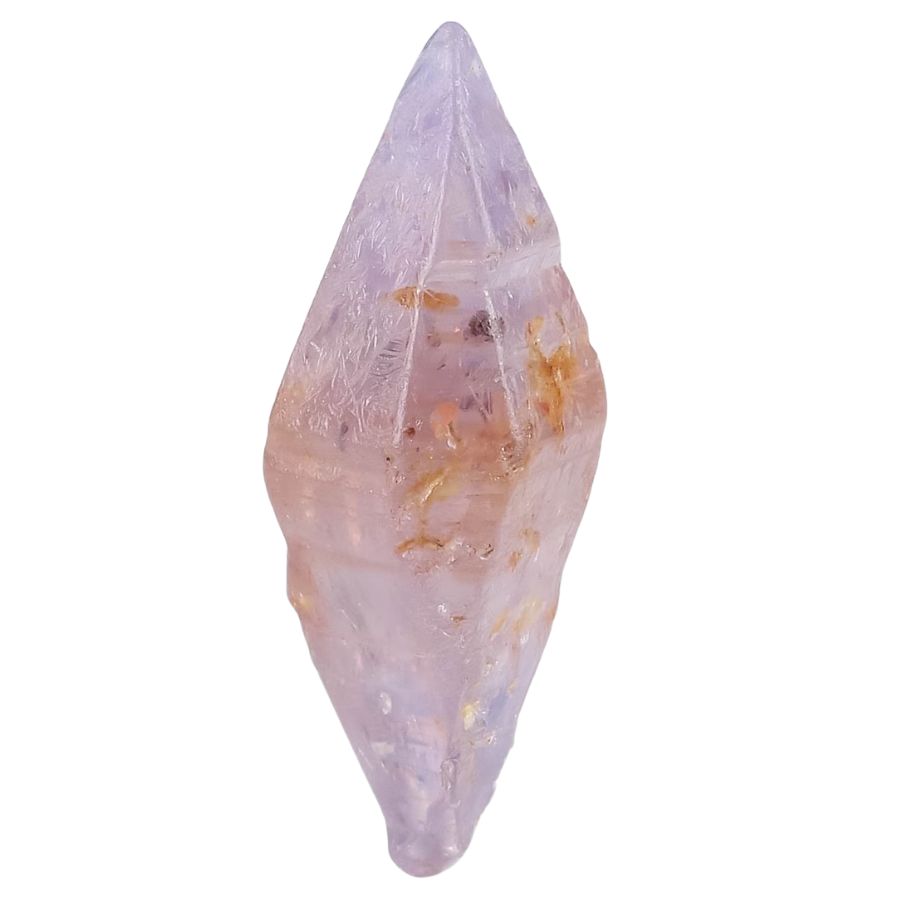
Chemical composition in gemstones refers to the types of elements and compounds that make up the stone.
This composition not only determines the basic characteristics of the gem, like color and hardness, but also influences how it forms in nature.
Because it’s a type of corundum, purple sapphire is primarily composed of aluminum oxide. Its striking purple color comes from trace elements like iron and titanium that are present in the crystal structure.
Amethyst, in contrast, is a variety of quartz, which means that it’s primarily made up of silicon dioxide.
The beautiful purple color of amethyst is mainly due to iron impurities within its structure, as well as natural irradiation processes that occur in the Earth.
Density – Amethyst feels lighter for its size.
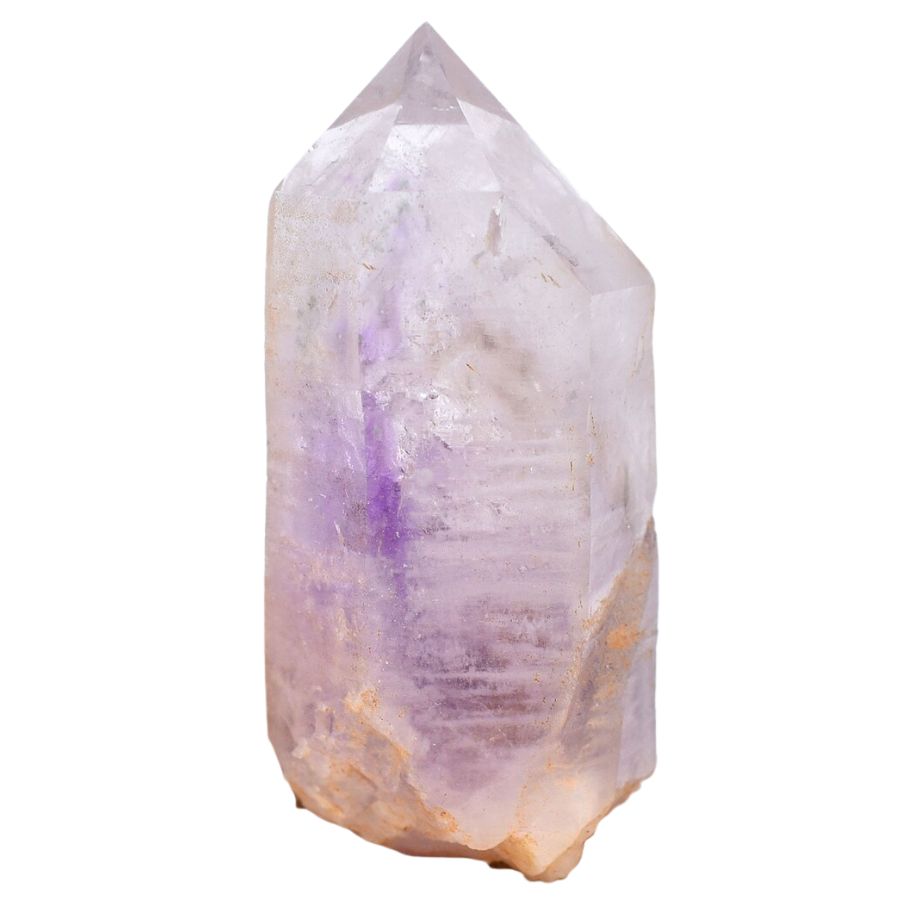
Density in gemstones is a measure of how much matter is packed into a given space. It’s calculated by dividing the mass of the gemstone by its volume, usually measured in grams per cubic centimeter (g/cm³).
Purple sapphire, known for its durability and beauty, has a higher density, typically around 3.98 g/cm³. This higher density means that a purple sapphire will feel heavier compared to other stones of the same size.
On the other hand, amethyst, a popular and vibrant gemstone, has a lower density, around 2.65 g/cm³. This means that an amethyst stone will be lighter than a purple sapphire of the same size.
Formation – Purple sapphires form in high temperatures and pressure.
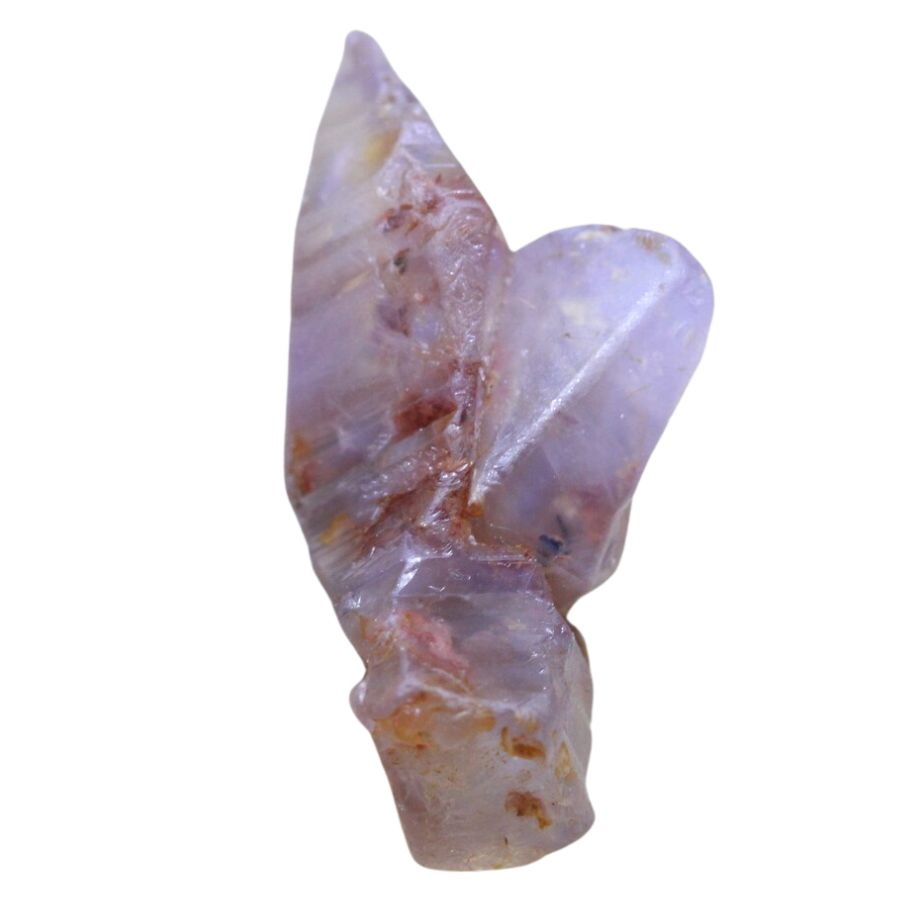
Purple sapphires are formed deep within the Earth, under conditions of high temperature and pressure. This formation typically occurs in igneous rocks and alluvial deposits.
Amethyst, in contrast, forms in a different way. This gemstone typically develops in cavities or fractures within volcanic rocks or geodes.
These spaces allow silica-rich water to deposit and crystallize over time, leading to the formation of amethyst.
If you’re interested in seeking out these gems yourself, our guide on where to go rockhounding can provide detailed information on the specific terrains where these gemstones can be found.
Fluorescence – Amethyst can have a bluish or greenish white glow under UV light.
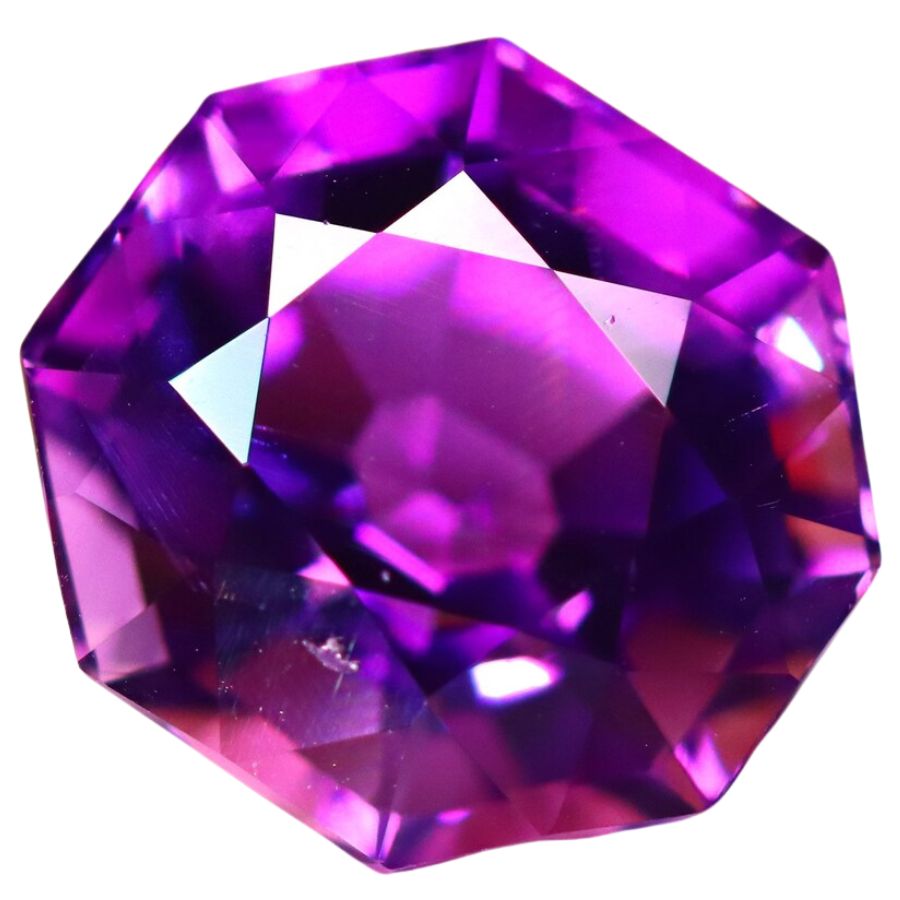
Fluorescence in gemstones is their ability to emit visible light when exposed to ultraviolet (UV) light. This happens when certain materials in the gem absorb the UV light and then release it as visible light, often in a different color.
Purple sapphires may exhibit fluorescence under UV light. When exposed to UV rays, some purple sapphires can glow with red or orange colors.
Amethyst also shows fluorescence under UV light but in a different manner. It tends to fluoresce a bluish or greenish white color.
Price – Purple sapphire is highly prized.
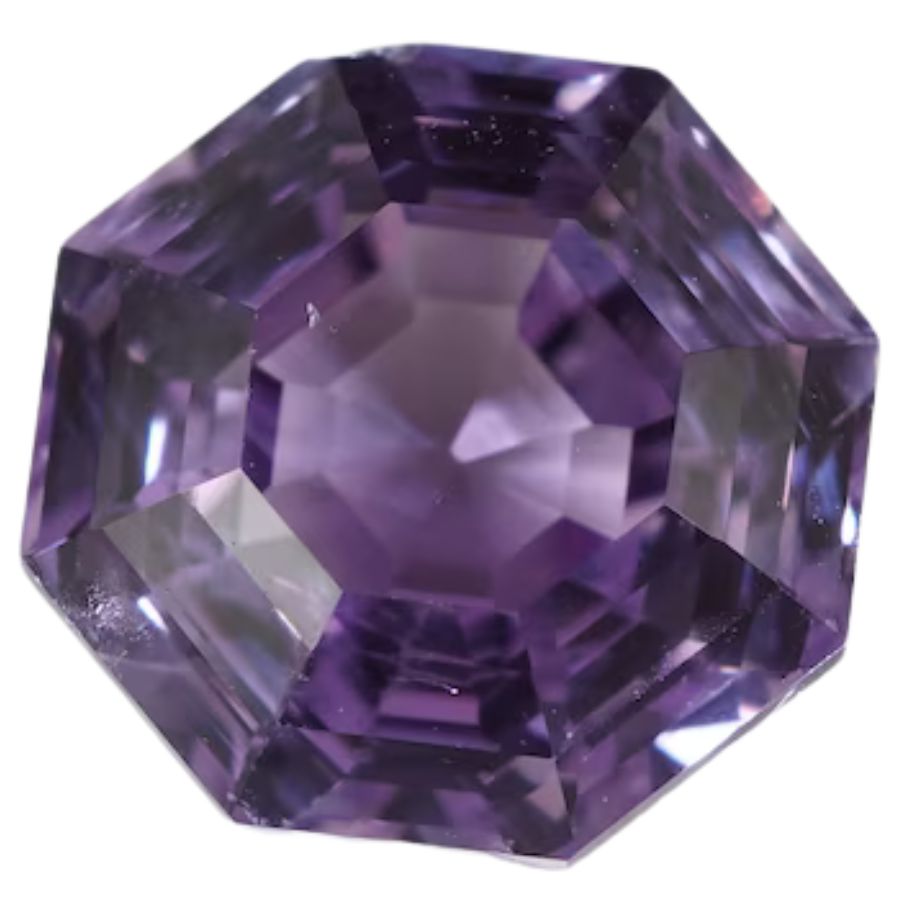
Purple sapphire commands a higher price in the gem market, primarily due to its rarity and the high demand for sapphires as a whole.
High-quality purple sapphires, known for their vivid color and clarity, are particularly valued and can fetch premium prices.
Amethyst, on the other hand, is generally more affordable than purple sapphire. This is because amethyst is more abundant and doesn’t have the same high demand as sapphires.
Factors like color intensity, clarity, and size can also influence what amethyst is worth. High-quality amethyst with deep purple colors and good transparency can be quite valuable.
Location – Amethyst is quite common and can be found in many places around the globe.
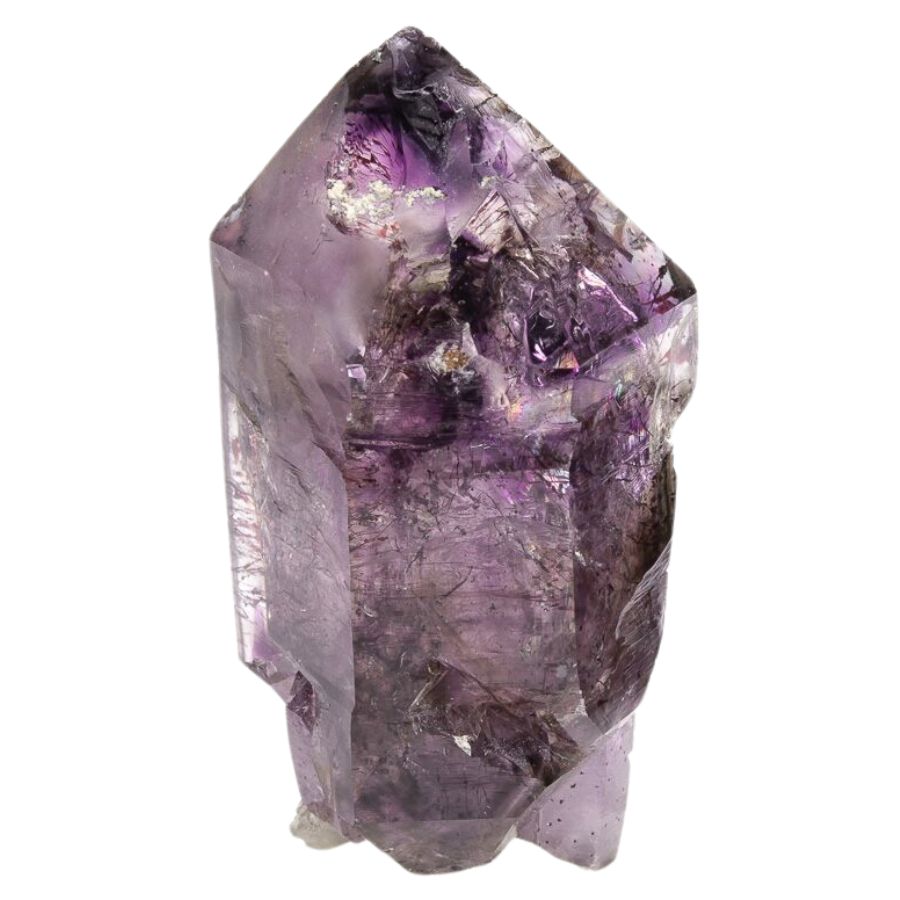
Purple sapphires are sourced from various parts of the world, each location contributing to the unique characteristics of the stones found there. Notable sources include Sri Lanka, Madagascar, and East Africa.
Amethyst, in contrast, is more widely distributed around the globe. Major sources of amethyst include Brazil, Uruguay, parts of Africa, and even the United States.
Understanding where these gemstones are commonly found can be quite helpful if you want to search for them. Our guide can help you with finding gems near you.
Amethyst vs Purple Sapphire – The Similarities
I always find it fascinating to explore how different gemstones can share certain similarities, even though they might seem quite distinct at first glance. Let’s ecplore the similarities between purple sapphire and amethyst.
Colors – Purple sapphire and amethyst have very similar hues and shades.
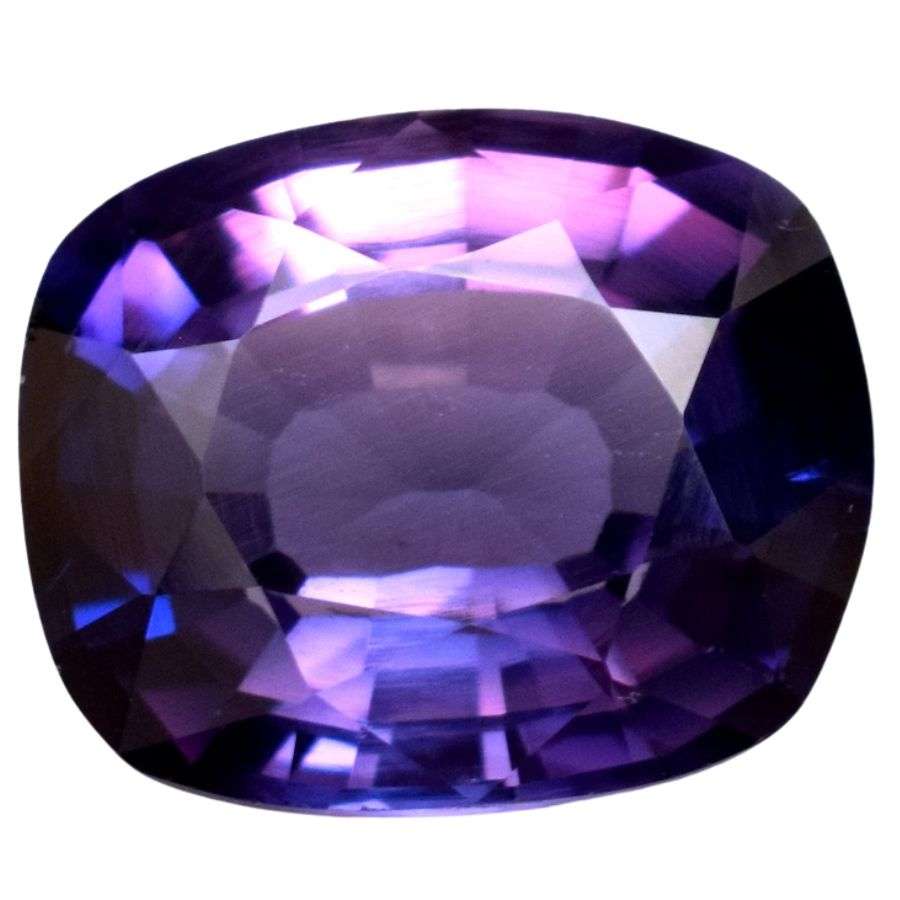
Purple sapphire and amethyst share a common palette in their range of colors. Both gemstones display a variety of purple hues, appealing to those who are drawn to this regal and mysterious color.
Purple sapphire is known for its diverse range of purple shades, spanning from light lilac to a deep, intense violet. The unique aspect of purple sapphire is its ability to show different shades when viewed under various lighting conditions.
Amethyst, on the other hand, is also celebrated for its beautiful purple coloration. Its shades can range from a soft, pale lavender to a rich, deep purple, often exhibiting color zoning.
Streak – Both gems have a white streak.
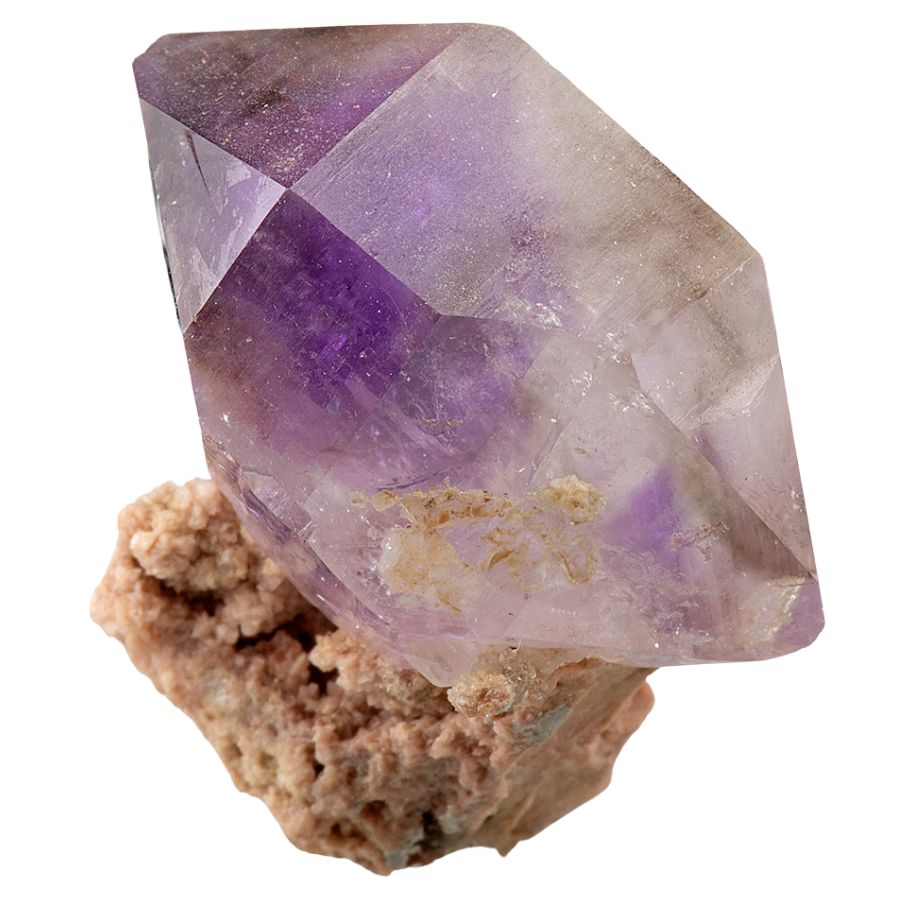
Streak is a term used in geology to describe the color of a mineral’s powder when it is rubbed against a rough surface, like a porcelain plate. It’s one way to help identify minerals.
Purple sapphire, like all varieties of sapphire, has a white streak.
Similarly, amethyst also leaves a white streak when tested on a porcelain plate.
Clarity – Each gem can be clear or have inclusions.
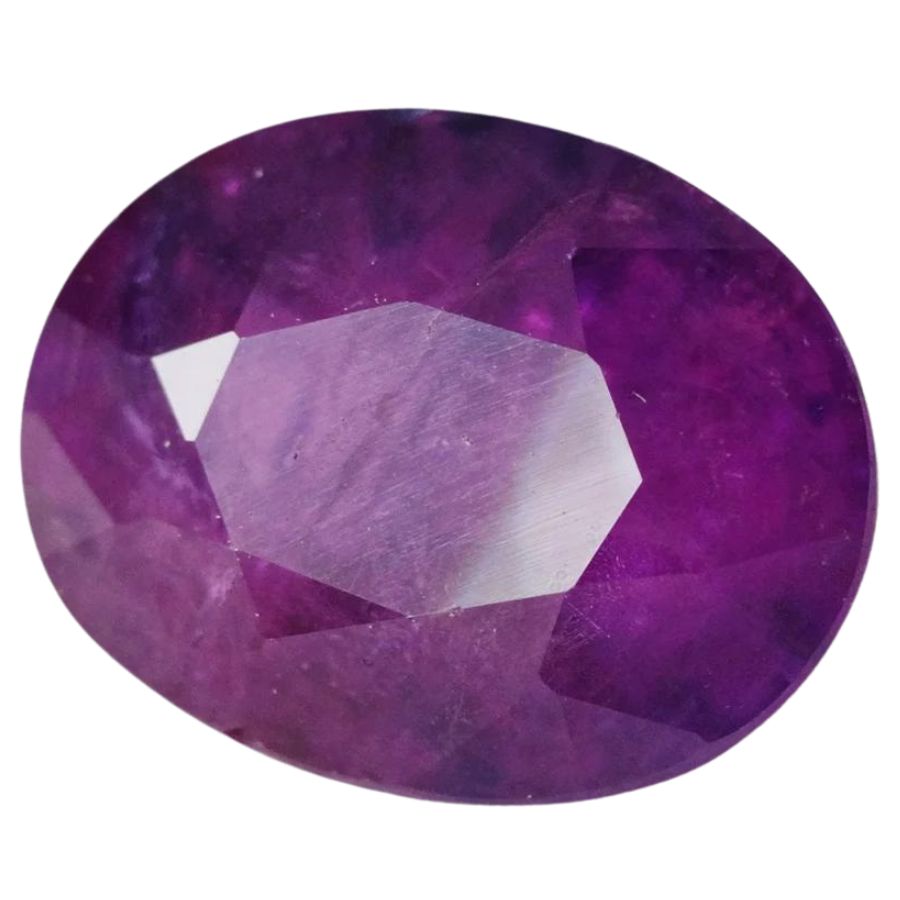
Clarity in gemstones refers to the presence or absence of inclusions and blemishes within or on the surface of the stone. It’s an important factor in evaluating gemstones, as it affects their appearance and value.
Inclusions are natural characteristics like minerals or fractures, while blemishes are surface imperfections. The fewer the inclusions and blemishes, the higher the clarity and, often, the value of the gemstone.
Purple sapphires exhibit a range of clarity, from nearly flawless to having visible inclusions. High-quality purple sapphires are typically eye-clean, meaning they have few inclusions visible to the naked eye.
Amethyst, similarly, varies in clarity. While many amethysts are found with fewer inclusions and can be very transparent, they can also contain natural inclusions, such as tiger-stripes or feather-like patterns.
Cleavage – Neither gemstone has cleavage.
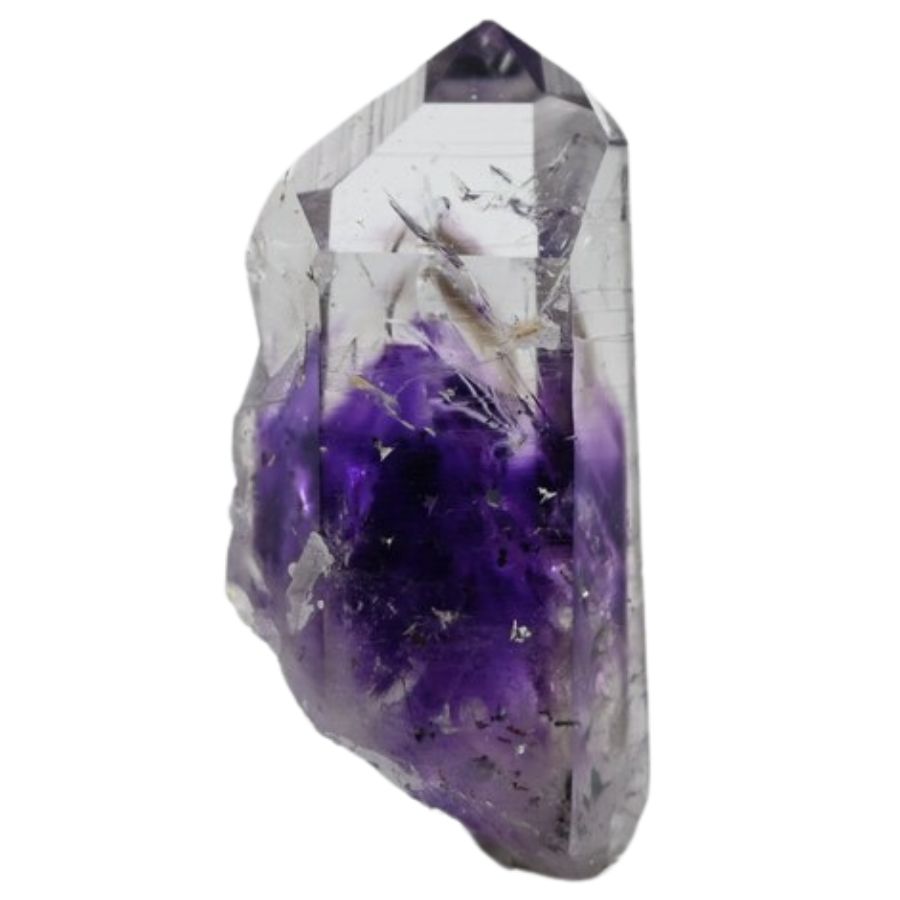
Cleavage is a term that describes the way a mineral breaks along certain planes based on its crystal structure. If a mineral has cleavage, it means it can split easily along flat surfaces.
Gemstones with no cleavage are often more durable because they don’t have these natural breaking points, making them less likely to split or chip.
Purple sapphire is one such gemstone that lacks cleavage. This means it doesn’t break along defined planes, which enhances its durability and makes it less prone to splitting or chipping upon impact.
Instead, purple sapphire tends to fracture in a conchoidal, splintery manner, which is a different type of breakage that doesn’t follow flat planes.
Similarly, amethyst also does not have cleavage. When it breaks, it usually fractures in a conchoidal or uneven manner.
Magnetism – Amethyst and purple sapphire don’t exhibit magnetism.
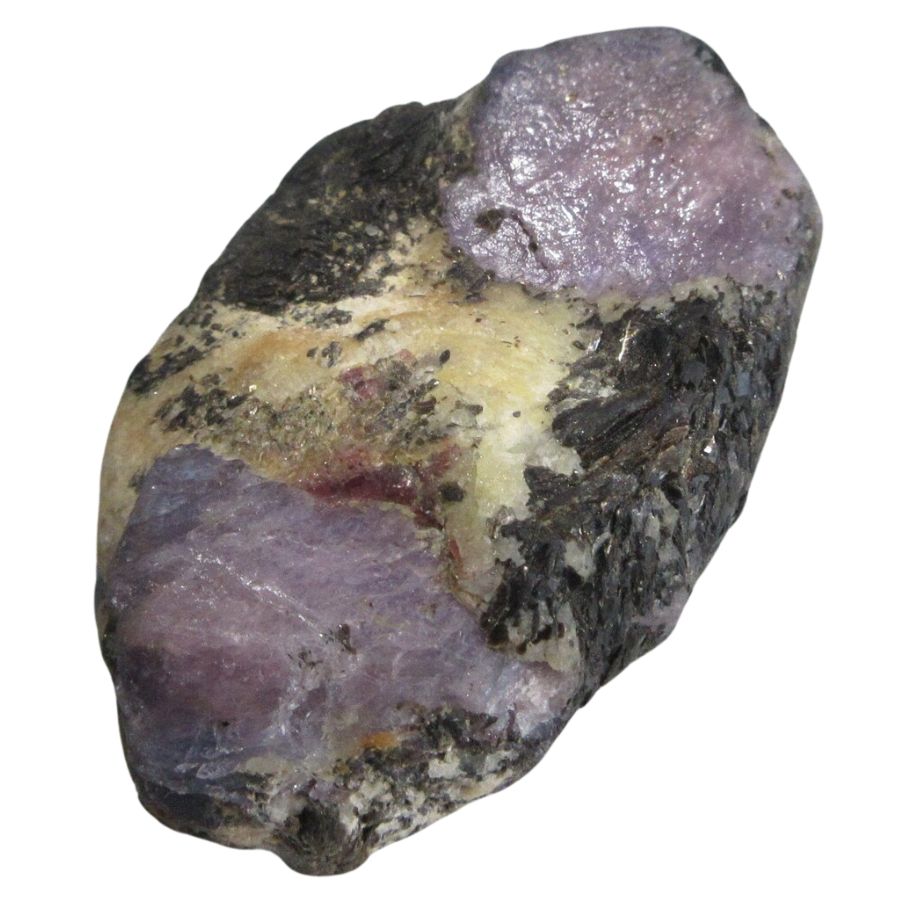
While some minerals show strong magnetism due to the presence of iron, nickel, or other magnetic elements, many gemstones typically exhibit little to no magnetic properties.
Purple sapphires generally do not exhibit magnetism. They are primarily composed of non-magnetic materials.
Amethyst, like purple sapphire, is not magnetic. This aligns with the general properties of quartz minerals.
Conductivity – The two gems don’t conduct electricity.
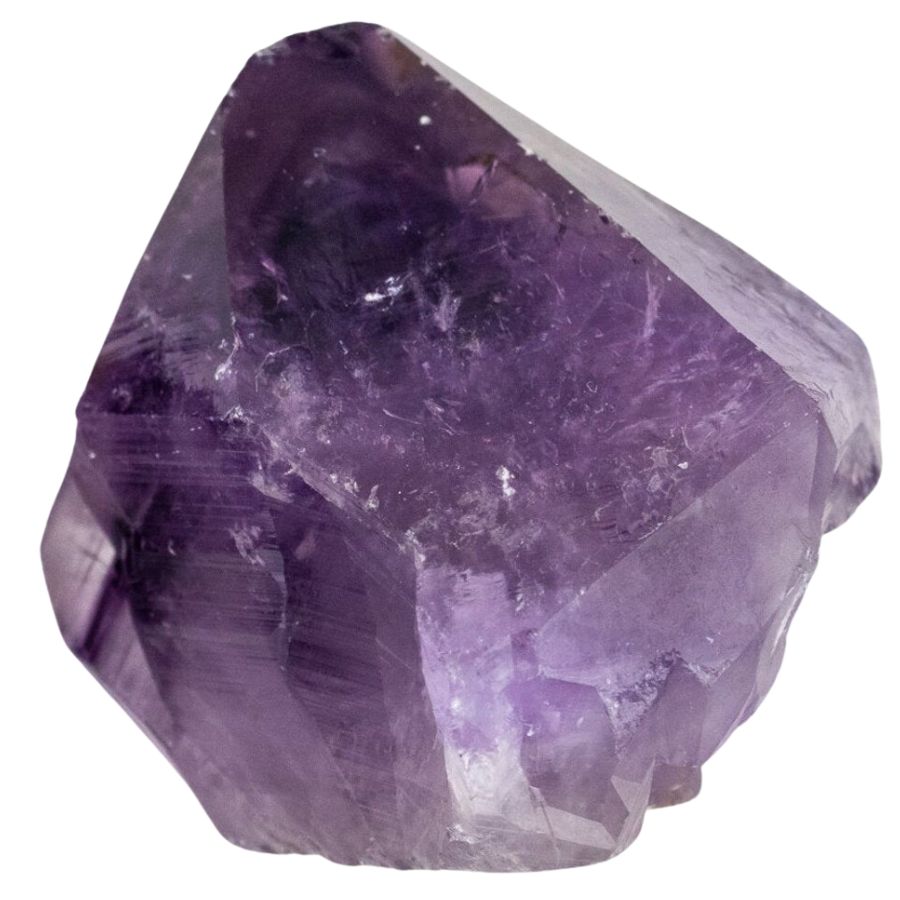
Conductivity in minerals is the ability to allow the flow of electric current through them. Some minerals are good conductors of electricity, often due to the presence of metals in their composition, while others are poor conductors.
Purple sapphires are generally poor conductors of electricity. Their crystalline structure and chemical makeup do not allow for easy movement of electrical current.
Similarly, amethyst is also known to be a poor conductor of electricity. The atomic structure and bonding in quartz crystals do not support the easy flow of electrical currents, making amethyst a poor conductor.
The Easiest Ways to Tell Purple Sapphire and Amethyst Apart
Differentiating between purple sapphire and amethyst can be a fascinating challenge. Scientists and gem professionals use specialized tools for this task, but there are also simple tests that anyone can do.
These methods are accessible for rock collectors and geology enthusiasts, making the exploration of these gems more engaging and hands-on.
UV Fluorescence Test
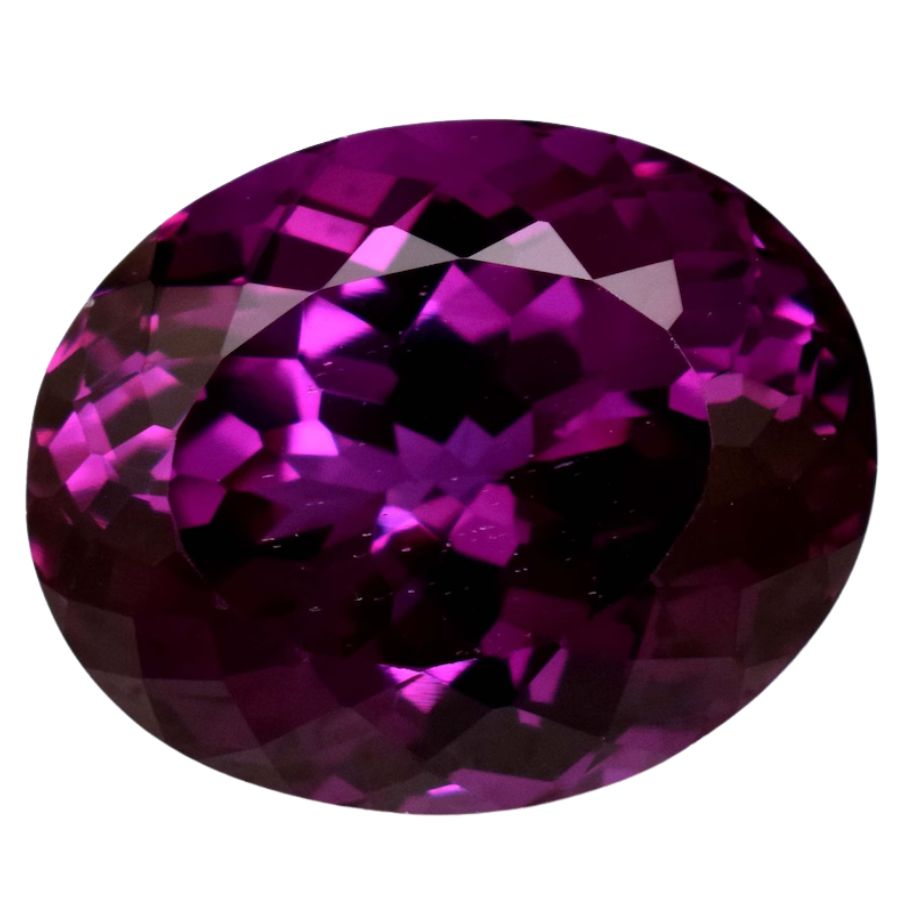
One of the methods to differentiate between purple sapphire and amethyst is by testing their fluorescence. This involves using UV light to see how the gemstone reacts.
Amethyst is known to typically fluoresce a bluish or greenish white under UV light. In contrast, purple sapphire may show red or orange fluorescence under UV light.
This difference in the color of fluorescence is one of the ways to tell these two purple gemstones apart. Each gem’s reaction to UV light provides valuable information that can assist in distinguishing one from the other.
Visual Inspection of Inclusions
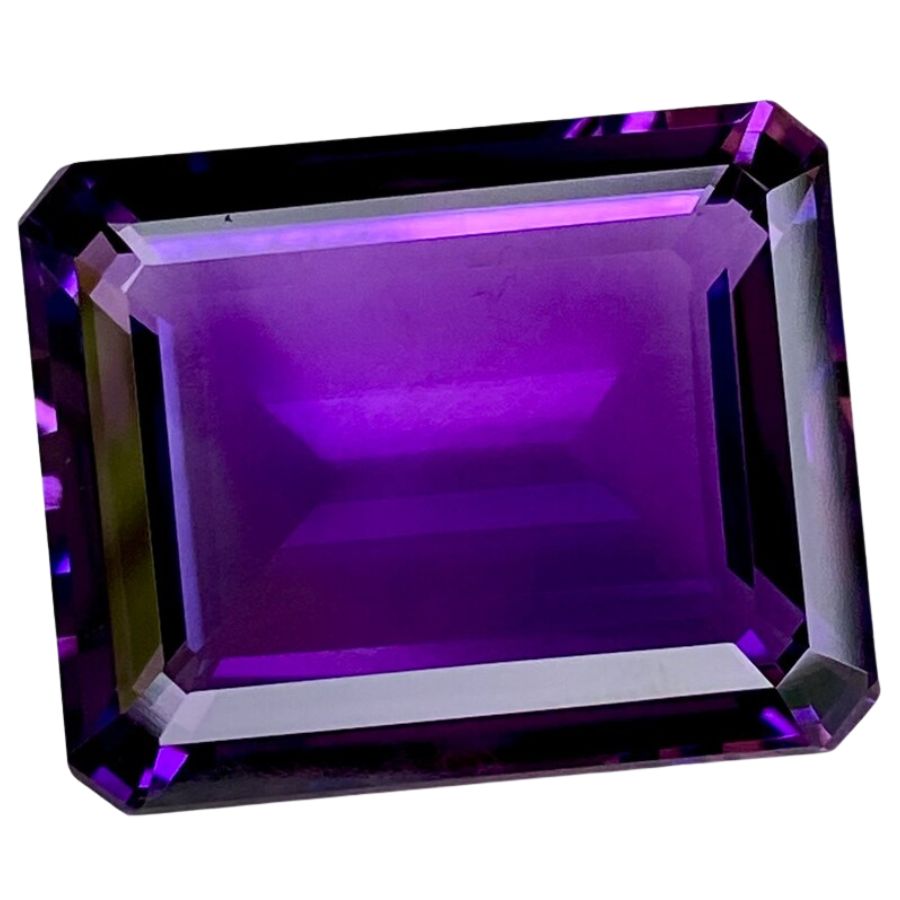
Another interesting way to tell the difference between purple sapphire and amethyst is by inspecting them for inclusions. Inclusions are little imperfections or materials trapped inside a gemstone, and they can be quite unique to each type of stone.
By using a magnifying glass or a microscope, you can take a closer look at these inclusions, which can provide clues about the stone’s identity.
Purple sapphires may have inclusions that look like fine needles, known as rutile needles or silk. These are tiny, thread-like inclusions that can be seen running through the stone.
Amethyst often has different inclusions. You might see features like tiger stripes or other patterns typical of quartz inclusions. These can vary in appearance, but they are distinct from the inclusions you’d find in purple sapphire.
Breath Test
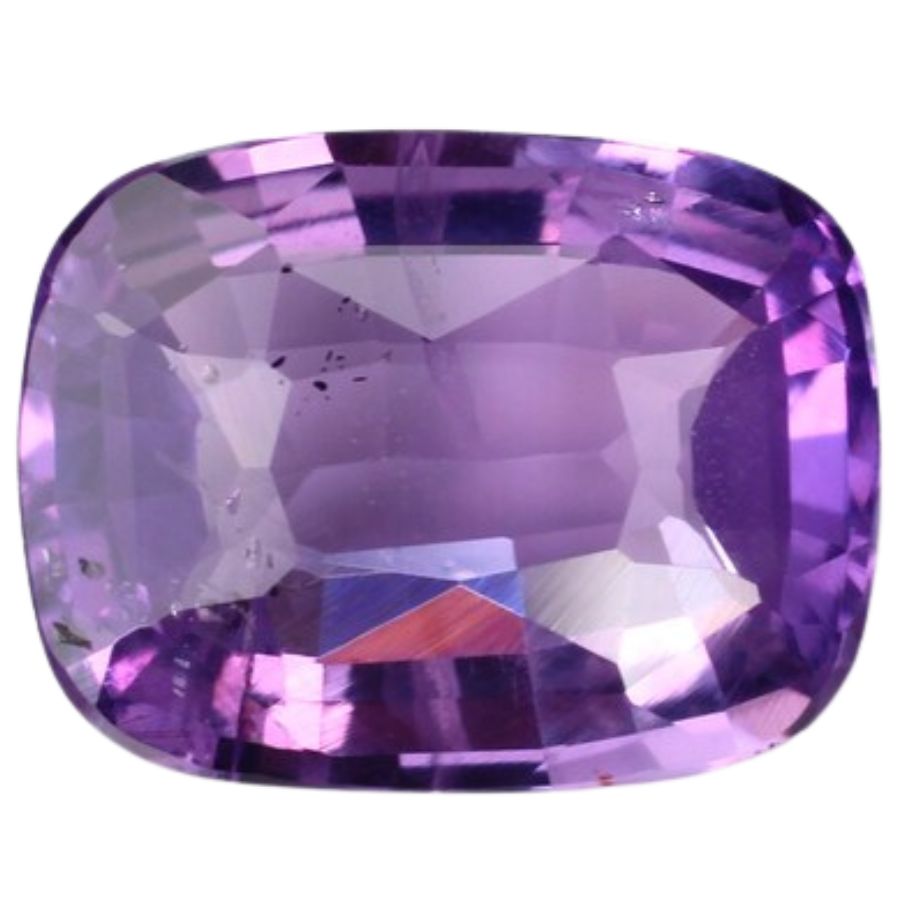
To differentiate between purple sapphire and amethyst, a simple and interesting method is the breath test. It’s a quick and easy way to get an idea about the stone’s thermal conductivity.
This test involves holding the gemstone close to the mouth and breathing out gently onto its surface to create a light fog, similar to how you would fog up a mirror or a window.
When performing the breath test on a purple sapphire, you’ll notice that the fog clears up almost instantaneously, usually in less than a second or two.
This rapid dissipation of fog indicates a higher thermal conductivity, which is a characteristic of gemstones like sapphire.
On the other hand, if you do the same breath test on an amethyst, the fog tends to linger for a few seconds before it clears. This longer duration suggests a lower thermal conductivity, which is typical for quartz minerals, including amethyst.

